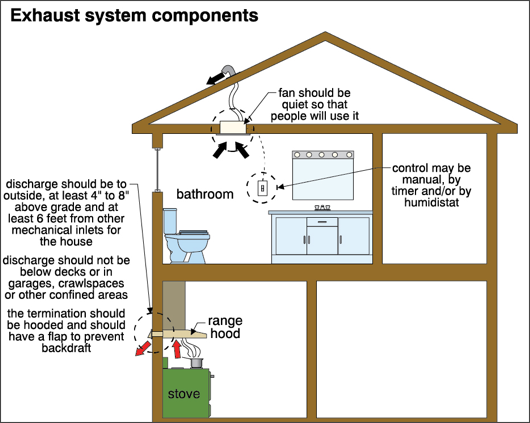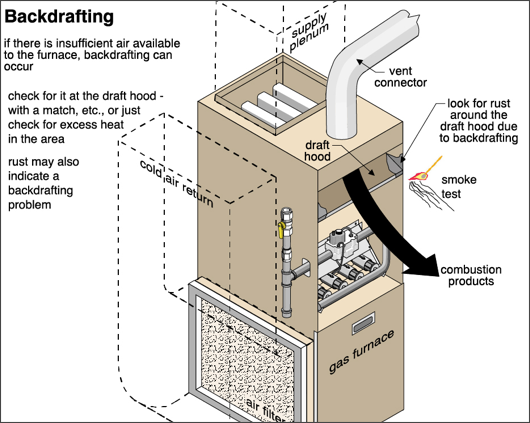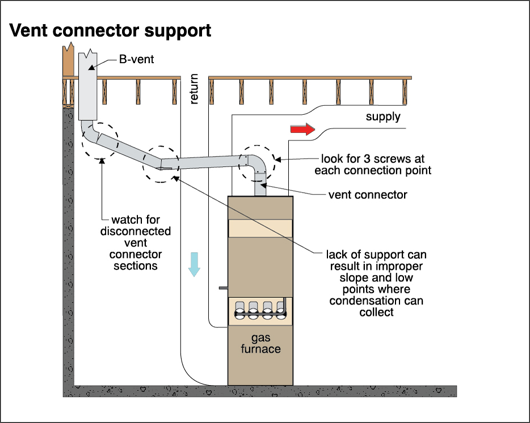-
FAQs
At New Perspective Inspections we do our best to answer all of your questions. Below you will find a list of what we believe are the most frequently asked questions. If you have any questions that have not been answered below, do not hesistate to contact us.
-
A typical inspection should take 2 to 3 hours to complete. This can vary, given the current condition and size of the home, the accessibility of mechanical systems, and so on. As a courtesy to sellers, we recommend that they be informed of the timeframe in a pre-purchase home inspection situation.
We inspect the major systems of the house. These include the Roof, Exterior, Structure, Electrical, Heating, Cooling, Plumbing, Insulation, and Interior. Our goal is to identify any existing major problems that would affect a typical buyer's decision to purchase.
Our typical fee for an inspection is $425.00. However, some factors will affect the fee. If you are comparing home inspection firms, the fee charged should not be the deciding factor unless the level of service offered is identical. Remember, you are considering a major purchase and your choice of home inspector should be based on getting the best value, not just the best price.
- Complete home inspection conducted by an experienced professional.
- Comprehensive written home inspection report.
- Technical support for as long as you own your home.
Definitely. We encourage you to attend. The inspection is a valuable learning experience for most homebuyers.
You don't have to take notes during the inspection. We will document everything in a written report. It's much better to follow the inspector through, listening to his comments to make sure you understand. It's also a great opportunity to ask questions and to clarify anything that confuses you.
Absolutely! You may want to bring some questions that you have regarding the home. You should also feel free to stop the inspector and ask questions as you go. If the inspector's comments or explanations are not clear, please ask for clarification.
We encourage you to bring your family. Buying a home is a big decision, whose opinions matters more than your families?
You do receive a written report. It would be unfair to ask you to remember all of the things we cover during a home inspection. The report includes a summary of the condition of the home and details on all the major systems of the home. It is delivered within 24 hours after the inspection.
No. Our goal is to report on the condition of the house, indicating potential repairs and expenses. Ultimately, it is your decision as to whether or not you buy the house. The home inspection is very important but it is only one piece of the puzzle. Only you know all of the factors at play. Your real estate professional can help you here.
A home inspection is a professional opinion based on less-than-complete information. It's a little like getting a check-up from your doctor. It improves your odds of good health but there is no guarantee or warranty. Some problems can only be discovered by living in a house; they cannot be discovered during a home inspection. For example, some shower stalls leak when people use the shower but don't leak when you simply turn on the shower. Some roofs and basements only leak when specific weather conditions exist. Some problems will only be discovered when carpets are lifted, furniture is moved or finishes are removed. As such, we cannot and do not offer a warranty on the house. Home warranty programs are available from others. We would be happy to help you contact a warranty company.
Our inspectors are state licensed, ATI certified and members of Internachi.
NPI is ready to serve you quickly. Generally allowing at least 3 days for scheduling is ideal but we are here to work with you when time is of the essence.
-
Carbon Monoxide – What You Need To Know
What is Carbon Monoxide (CO)?
- CO is a colorless, odorless, tasteless gas
- It is a by-product of incomplete combustion (unburned fuel such as gas, oil, wood, etc.)
- Low concentrations of CO can go undetected and can contribute to ongoing, unidentified illnesses. At high concentrations, it can be deadly.
Why is it Dangerous?
If there is CO in the air you breath, it will enter your blood system the same way oxygen does through your lungs. The CO displaces the oxygen in your blood, depriving your body of oxygen. When the CO displaces enough oxygen, you suffocate.
What are the Symptoms?
Continued exposure or high concentrations can result in –
- Confusion
- Severe headaches
- Cardiac problems
- Breathing difficulties
- Brain damage
- Dizziness
- Death
Long term exposure to low concentrations –
- Slight headaches
- Fatigue
- Shortness of breath with only moderate exertion
- Nausea
- Dizziness and confusion
Why is it called "The Great Imitator"?
- Symptoms of CO poisoning are very similar to the flu
- Illness in pets preceding illness in a family member may suggest CO poisoning
Who is at Greater Risk?
- Senior citizens
- Unborn babies
- People with respiratory or coronary problems
- Infants
- Pregnant women
- Young children
Note: Vulnerable people who are exposed even to low levels of CO for long time periods may have similar health affects as those exposed to high concentrations of CO.
What can Produce CO in our Homes
Anything that burns fuel or generates combustion gases including -
- Gas Stoves
- Fireplaces
- Automobiles
- Barbecues
- Furnaces
- Ranges
- Boilers
- Space heaters
- Water heaters
- Portable generators
Solid fuels, such as wood, always produce carbon monoxide when they are burned. Gas and liquid fuels may produce no CO or very little.
What are the most common sources of Carbon Monoxide?
1. Automobile exhaust in attached garages.
This is responsible for 60% of all CO alarms. People who warm their cars up in the garage are trapping CO inside the garage. The CO can find its way into the home.

2. Gas cooking appliances.
This is reported to account for 20% of CO alarms. It may be a result of a misused, poorly maintained, poorly installed, or unvented cooking appliance.

3. Poor draft/venting for fuel burning appliances.
This is one of the most common and serious causes for CO build-up and has been reported to account for up to 19% of CO alarms. The products of combustion are not being safely expelled to the exterior. This could be due to venting problems, such as blocked chimney flues or inadequate venting for appliances or fireplaces. Other problems include poor installation and negative air pressure in the house, causing backdrafting, often due to exhaust fans.

Other problems include poor combustion at furnace. Inadequate combustion air to the furnace can result in incomplete combustion. If the furnace has a cracked heat exchanger, it is possible to get CO into the circulating air. It is also imperative that we do not deprive our heating equipment and fuel burning appliances of air; especially in air-tight homes where running exhaust fans can result in a shortage of combustion air. Combustion air is essential for safe operation of furnaces, water heaters, and other fuel burning equipment.

There can also be a leak in a chimney or flue pipe.

Ventilation issues are very common as a result of barbecues or gasoline powered equipment operating in an attached garage, basement, or enclosed area.
Are there more problems with carbon monoxide today than 30 years ago?
Yes, this is due to:- More energy-efficient, air-tight homes
- Less natural ventilation
How can I guard against carbon monoxide poisoning?
The first line of defense is to have your home heating systems, fuel burning appliances, flues and chimneys checked and/or cleaned annually.
Here is the inspection checklist. Specialists should check for:
- Blocked openings to flues and chimneys
- Cracked, rusted, or disconnected flue pipes
- Dirty filters
- Rusted or cracked heat exchanger
- Soot or creosote build-up inside fireplaces and chimney flues
- Exhaust or gas odors
- Attached garages require gas proofing and automatic closers for doors into the home
- Adequate combustion air
- Adequate venting on indoor combustion appliances (i.e-gas stoves)
The second line of defense is a CO detector.
Carbon Monoxide Detectors
Background
It’s a relatively new technology introduced in the early 1990s. It is designed to warn homeowners when CO reaches dangerous levels within the home.
How do they work?
CO detectors sample the air at specific time intervals. A microchip inside the detector stores the reading and keeps track of the level of CO that the detector is exposed to over time
Types of sensors:
Residential
- Biometric (Oldest type of sensor)
- Metal Oxide Semi-conductor
- Electrochemical (The best of the three types for a residential sensor)
Industrial
- Infrared – Highly advanced, very expensive. Not something you would find at a typical hardware store.
The detectors are supposed to sound an alarm when exposed to a set level of CO (measured in parts per million) over a specific time period. These levels or standards are set by UL (Underwriters Laboratories).
Old Standard (Units manufactured between October 1, 1995 and October 1, 1998) - First Generation CO detectors.
Exposure
CO (ppm)
Time
To a low level for a prolonged period of time
15
Alarm after 30 days
To a low level of CO for an extended period of time
100
Alarm within 90 minutes
To a moderate level of CO for a shorter period of time
200
Alarm within 35 minutes
To a high level of CO for a short period of time
400
Alarm within 15 minutes
The UL Standard was revised and any detector manufactured after October 1, 1998 must conform to the new Standard.
Exposure
CO (ppm)
Time
To a low level for a prolonged period of time
30
Alarm after 30 days
To a low level of CO for an extended period of time
70
Alarm within 189 minutes
To a moderate level of CO for a shorter period of time
150
Alarm within 50 minutes
To a high level of CO for a short period of time
400
Alarm within 15 minutes
Also included in the new Standard is:
- CO detector should ignore a CO level reading of 70 for at least 1 hour without alarming
- CO detector should ignore a CO level reading of 150 for at least 10 minutes without alarming
- Must only signal under alarm or trouble. No low-level warning signal is allowed
- Must have a SILENCE button to shut it off. Must re-alarm after 6 minutes if CO levels persist
- Must meet the specificity test referencing non-alarm status at specific concentrations of certain gases and vapors
To put levels into perspective:
CO Level (ppm)
Health Effect
0
Desirable level
9
Maximum outdoor air quality level as per EPA
50
Maximum concentration for a continuous exposure in an 8-hour time period (OSHA standard)
400
Headaches in 1 to 2 hours, life threatening after 3 hours
800
Nausea and convulsions, death within 2 hours
1600
Nausea within 20 minutes, death within 1 hour
12,800
Death within 1 to 3 minutes
Note: These studies are generally done on young, healthy people. These symptoms can change drastically depending on age, sex, weight, habits (e.g. smoking), and most importantly, your health.
The Controversy
- Reliability of the detectors
The Issue
- CO detectors are supposed to alarm at certain levels as indicated in the tables above
- Recent testing suggests that many of these devices are not nearly as reliable as they should be
- There has been regular television coverage that focused on false alarms and the reliability of CO detectors
Example
- In 1994, Chicago was the first major city to make these detectors mandatory in the living space
- In the last three months of 1994, the Chicago Fire Department responded to 8,600 CO alarms
- In almost every case there was no dangerous level of CO found during follow-up investigations
Result
- Laboratory testing was done
- Up to 1/3 of the alarms tested, failed to alarm
Reasons
1. Technology
- Technology for residential CO detectors is very primitive.
- Industrial detectors have a different set of standards and more sophisticated technology. As a result, they are very expensive.
- Different detectors have large variances on the levels at which they are supposed to alarm. The sensor technology used in home alarms is not designed to measure and display low level, short term concentrations of CO. Substantial differences exist in the sensitivity of different sensors at low levels. As a result, they may go off too soon or not soon enough.
2. Humidity
- Standards require these devices to be tested at a humidity of 50%.
- Testing revealed that many devices failed to respond when humidity levels were low even though they are supposed to work within a large humidity range. See your CO detectors manual.
- In colder climates, humidity levels can fall well below 50% (in fact the humidity should not be higher than 40%) during the cold season when furnaces and other fuel burning appliances are in full operation.
3. Effect of Other Gases and Vapors
- Other gases such as Carbon Dioxide can also trigger a CO alarm. The UL 2034 Standard requires that CO alarms do not alarm when certain concentrations of other gases and vapors exist in the vicinity of a CO detector. The level for Carbon Dioxide in the old standard was low, which may have contributed to many false alarms with first generation CO detectors.
Conclusions
- CO detectors are designed to protect the average healthy human from death or serious injury under the current standards; however –
- People who are more susceptible cannot depend on these devices for total protection. In this case, more sensitive CO detecting equipment should be used.
- Several groups are working with UL to improve the standards. October 1999 revisions have already been drafted.
- There is room for improvement by imposing stricter standards as well as technological development.
- It is critical that people understand the dangers of CO and that the people who investigate it are properly trained and are using CO testing equipment properly.
Where to install a CO detector?
- One or more CO detectors in accordance with the manufacturer’s recommendations. Usually one per floor.
- Maintain and test regularly as instructed by the manufacturer.
Things to look for when buying a CO detector?
- Type of sensor (electrochemical)
- Certification-UL 2034
- Conforms to new standard
- IAS 6-96 is a supplementary standard to the UL 2034 which includes reliability testing. This standard may not be visible on the box.
- Other considerations include digital display, sensor life, power source, and warranty.
How does all of this relate to your home inspection?
A home inspection may reveal a potential Carbon Monoxide source.
Common deficiencies found during inspections include:- Venting deficiencies
- Damaged or rusted flue pipes
- Dirty or blocked chimney flues
- Cracked heat exchangers
- Gas proofing deficiencies
- Inadequate combustion air
- Poorly installed equipment
Limitations –
- Visual Inspection
- Equipment available
There are other ways to test CO levels in a home. These tests go beyond the scope of a standard home inspection.
Line drawings are from the Carson Dunlop Home Inspection Training Program and Home Inspection Software Tool – Horizon



